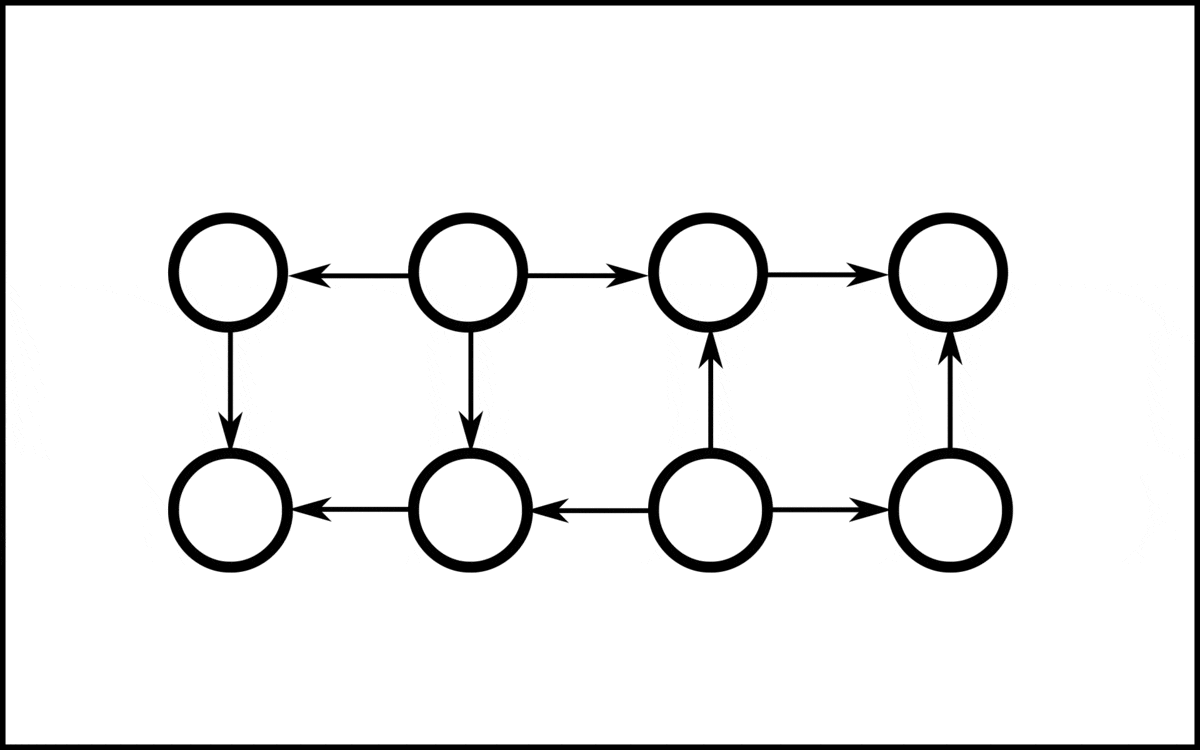|
Push–relabel Maximum Flow Algorithm
In mathematical optimization, the push–relabel algorithm (alternatively, preflow–push algorithm) is an algorithm for computing maximum flows in a flow network. The name "push–relabel" comes from the two basic operations used in the algorithm. Throughout its execution, the algorithm maintains a "preflow" and gradually converts it into a maximum flow by moving flow locally between neighboring nodes using ''push'' operations under the guidance of an admissible network maintained by ''relabel'' operations. In comparison, the Ford–Fulkerson algorithm performs global augmentations that send flow following paths from the source all the way to the sink. The push–relabel algorithm is considered one of the most efficient maximum flow algorithms. The generic algorithm has a strongly polynomial time complexity, which is asymptotically more efficient than the Edmonds–Karp algorithm. Specific variants of the algorithms achieve even lower time complexities. The variant based on the h ... [...More Info...] [...Related Items...] OR: [Wikipedia] [Google] [Baidu] |
Mathematical Optimization
Mathematical optimization (alternatively spelled ''optimisation'') or mathematical programming is the selection of a best element, with regard to some criterion, from some set of available alternatives. It is generally divided into two subfields: discrete optimization and continuous optimization. Optimization problems of sorts arise in all quantitative disciplines from computer science and engineering to operations research and economics, and the development of solution methods has been of interest in mathematics for centuries. In the more general approach, an optimization problem consists of maxima and minima, maximizing or minimizing a Function of a real variable, real function by systematically choosing Argument of a function, input values from within an allowed set and computing the Value (mathematics), value of the function. The generalization of optimization theory and techniques to other formulations constitutes a large area of applied mathematics. More generally, op ... [...More Info...] [...Related Items...] OR: [Wikipedia] [Google] [Baidu] |
C (programming Language)
C (''pronounced like the letter c'') is a General-purpose language, general-purpose computer programming language. It was created in the 1970s by Dennis Ritchie, and remains very widely used and influential. By design, C's features cleanly reflect the capabilities of the targeted CPUs. It has found lasting use in operating systems, device drivers, protocol stacks, though decreasingly for application software. C is commonly used on computer architectures that range from the largest supercomputers to the smallest microcontrollers and embedded systems. A successor to the programming language B (programming language), B, C was originally developed at Bell Labs by Ritchie between 1972 and 1973 to construct utilities running on Unix. It was applied to re-implementing the kernel of the Unix operating system. During the 1980s, C gradually gained popularity. It has become one of the measuring programming language popularity, most widely used programming languages, with C compilers avail ... [...More Info...] [...Related Items...] OR: [Wikipedia] [Google] [Baidu] |
Breadth-first Search
Breadth-first search (BFS) is an algorithm for searching a tree data structure for a node that satisfies a given property. It starts at the tree root and explores all nodes at the present depth prior to moving on to the nodes at the next depth level. Extra memory, usually a queue, is needed to keep track of the child nodes that were encountered but not yet explored. For example, in a chess endgame a chess engine may build the game tree from the current position by applying all possible moves, and use breadth-first search to find a win position for white. Implicit trees (such as game trees or other problem-solving trees) may be of infinite size; breadth-first search is guaranteed to find a solution node if one exists. In contrast, (plain) depth-first search, which explores the node branch as far as possible before backtracking and expanding other nodes, may get lost in an infinite branch and never make it to the solution node. Iterative deepening depth-first search avoid ... [...More Info...] [...Related Items...] OR: [Wikipedia] [Google] [Baidu] |
Topological Sorting
In computer science, a topological sort or topological ordering of a directed graph is a linear ordering of its vertices such that for every directed edge ''uv'' from vertex ''u'' to vertex ''v'', ''u'' comes before ''v'' in the ordering. For instance, the vertices of the graph may represent tasks to be performed, and the edges may represent constraints that one task must be performed before another; in this application, a topological ordering is just a valid sequence for the tasks. Precisely, a topological sort is a graph traversal in which each node ''v'' is visited only after all its dependencies are visited''.'' A topological ordering is possible if and only if the graph has no directed cycles, that is, if it is a directed acyclic graph (DAG). Any DAG has at least one topological ordering, and algorithms are known for constructing a topological ordering of any DAG in linear time. Topological sorting has many applications especially in ranking problems such as feedback arc set ... [...More Info...] [...Related Items...] OR: [Wikipedia] [Google] [Baidu] |
FIFO (computing And Electronics)
Representation of a FIFO queue In computing and in systems theory, FIFO is an acronym for first in, first out (the first in is the first out), a method for organizing the manipulation of a data structure (often, specifically a data buffer) where the oldest (first) entry, or "head" of the queue, is processed first. Such processing is analogous to servicing people in a queue area on a first-come, first-served (FCFS) basis, i.e. in the same sequence in which they arrive at the queue's tail. FCFS is also the jargon term for the FIFO operating system scheduling algorithm, which gives every process central processing unit (CPU) time in the order in which it is demanded. FIFO's opposite is LIFO, last-in-first-out, where the youngest entry or "top of the stack" is processed first. A priority queue is neither FIFO or LIFO but may adopt similar behaviour temporarily or by default. Queueing theory encompasses these methods for processing data structures, as well as interactions b ... [...More Info...] [...Related Items...] OR: [Wikipedia] [Google] [Baidu] |
Amortized Complexity
In computer science, amortized analysis is a method for analyzing a given algorithm's complexity, or how much of a resource, especially time or memory, it takes to execute. The motivation for amortized analysis is that looking at the worst-case run time can be too pessimistic. Instead, amortized analysis averages the running times of operations in a sequence over that sequence. As a conclusion: "Amortized analysis is a useful tool that complements other techniques such as worst-case and average-case analysis." For a given operation of an algorithm, certain situations (e.g., input parametrizations or data structure contents) may imply a significant cost in resources, whereas other situations may not be as costly. The amortized analysis considers both the costly and less costly operations together over the whole sequence of operations. This may include accounting for different types of input, length of the input, and other factors that affect its performance. History Amortized ... [...More Info...] [...Related Items...] OR: [Wikipedia] [Google] [Baidu] |



